Journal list menu
Export Citations
Download PDFs
Table of Contents
Fire-retardant and high-strength polymeric materials enabled by supramolecular aggregates: Special Collection: Distinguished Australian Researchers
- First Published: 04 January 2024
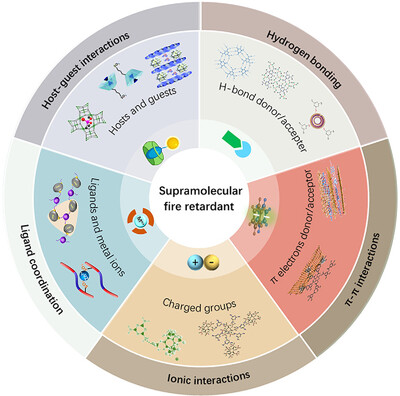
This work provides an overview of fire-retardant and high-strength polymer materials based on supramolecular structures and interactions of aggregates, including their conceptual design, characterization, modification principles, performances, applications, mechanisms, challenges, and future perspectives.
A review of metal nanoparticle-based surface-enhanced Raman scattering substrates for severe acute respiratory syndrome coronavirus 2 (SARS-CoV-2) detection
- First Published: 02 April 2023
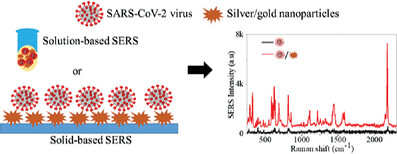
The rapid, simple, and accurate detection of coronavirus disease is clearly a priority for society. This review highlights the efforts to detect the virus using gold and silver nanoparticles as the platform for detection using surface-enhanced Raman scattering. There is great promise for testing based on this approach to minimise the impact of the disease.
Thin-film flow technology in controlling the organization of materials and their properties
- First Published: 03 October 2023
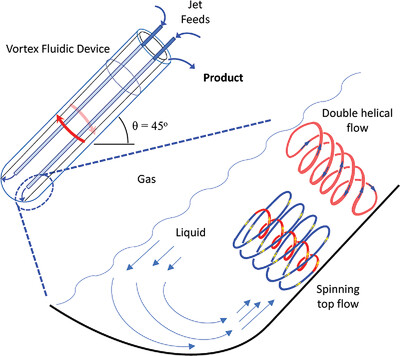
The versatile thin film microfluidic vortex fluidic device (VFD) has high shear submicron topological fluid flows with large surface areas for micro-mixing as well as rapid mass and heat transfer which can be harnessed for regulating molecular and macromolecular chemical reactivity, self-organization phenomena, and the synthesis of novel materials.
Aggregation-induced emission polymers via reversible-deactivation radical polymerization
- First Published: 06 September 2023
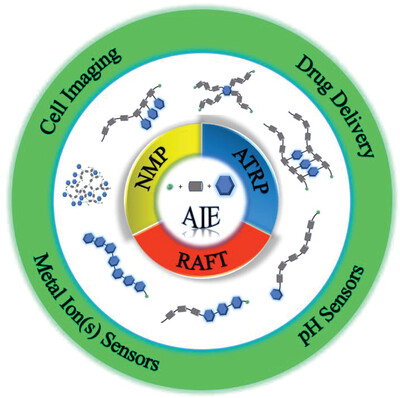
Aggregation-induced emission (AIE) active polymers have a wide range of practical applications, and one of the important methods for the design and synthesis of AIE polymers is the use of reversible-deactivation radical polymerization (RDRP) techniques. This review highlights some recent works on the design and synthesis of AIE polymers using typical RDRP such as RAFT, ATRP, and NMP. Importantly, possible applications and future directions of these AIE active polymers are also provided.
Shape dependent protein-induced stabilization of gold nanoparticles: From a protein corona perspective
- First Published: 22 February 2023
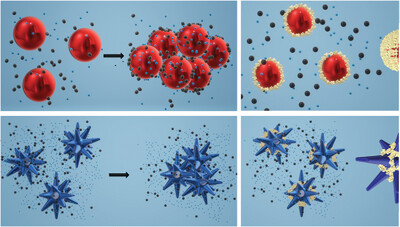
Gold nanoparticles demonstrate unique, shape-dependent protein interactions. The protein layers strongly adsorb onto the surface of the nanoparticles, which increases their stability. Protein does not entirely cover the surface of gold nanostars, but it provides stability with a protein layer around the core. These findings will support the creation of new nanostructures with enhanced sensing and targeting capabilities.
Phase separation-induced nanoprecipitation for making polymer nanoparticles with high drug loading
- First Published: 12 January 2023
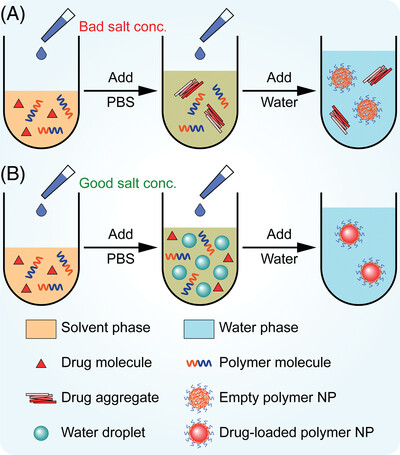
This study reports a simple and efficient salt screening method for making polymer nanoparticles with exceptionally high drug loading (up to 66.5 wt%). Upon addition of salt, phase separation occurs in a miscible solvent-water solution delaying the precipitation time of drugs and polymers to different extents, facilitating their co-precipitation and thus the formation of high drug-loading nanoparticles. This technology is versatile and easy to be adapted to various hydrophobic drugs, polymers, and solvents.





